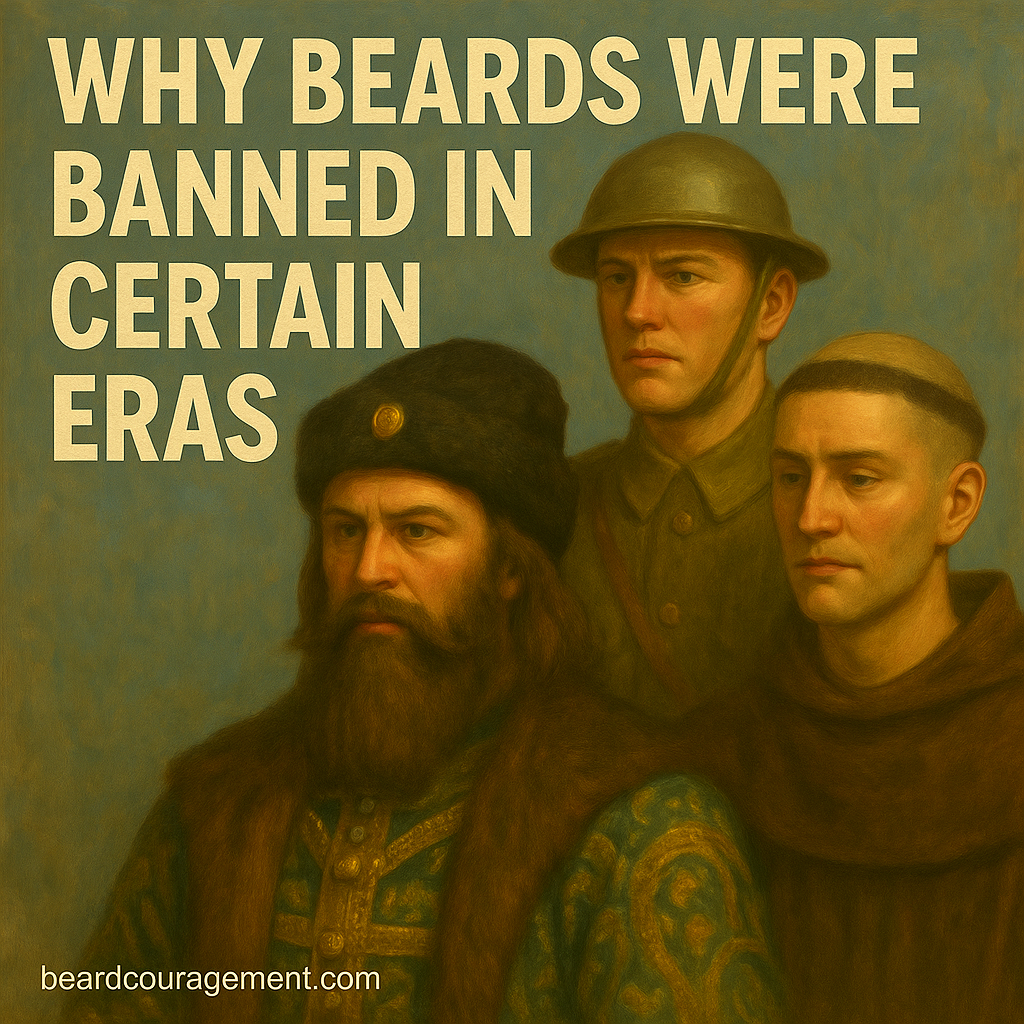
Throughout history, the beard has symbolized power, wisdom, and masculinity — yet there were times when wearing one could get you fined, taxed, or even punished. From royal decrees to military regulations, the ban on beards has often reflected politics, religion, and shifting cultural values.
The 16th-Century Beard Tax
One of the most famous beard bans came from Russia’s Tsar Peter the Great in the late 1600s. As part of his campaign to modernize Russia, Peter wanted his citizens to adopt clean-shaven European styles.
- Men who refused to shave had to pay a beard tax.
- Those who paid received a “beard token” as proof of compliance.
This law wasn’t just about looks — it was about identity. The beard symbolized old traditions, while shaving represented progress and modernization.
Beards and Religion
In some cultures, beards have been seen as signs of piety, while in others, they were restricted. During certain periods of Catholic and Islamic rule, beards were regulated or encouraged depending on which leaders were in power.
- In Medieval Europe, monks and priests were often required to shave to symbolize humility and discipline.
- In the Ottoman Empire, clean-shaven faces sometimes became fashionable among elites seeking Western influence.
Military Restrictions
Many armies throughout history banned or limited beards for practical reasons — particularly hygiene and uniformity.
- In the 19th century, the British and French militaries required soldiers to shave so that gas masks and helmets could seal properly.
- In modern times, military grooming standards continue to limit beards, though some exceptions exist for religious or medical reasons.
The Industrial and Victorian Eras
Beard trends have always mirrored social attitudes. In the early Industrial Revolution, beards were seen as unclean due to factory conditions. By contrast, later in the Victorian era, they became a symbol of morality and strength — a swing from restriction to celebration.
Political and Social Image
At various points, governments used beard bans to control image and influence. For instance:
- In Nazi Germany, military men were expected to maintain a clean-shaven look to project discipline.
- In 20th-century corporate culture, beards were considered “unprofessional,” reflecting conformity over individuality.
Why Beard Bans Fade Away
Over time, as societies modernized and personal expression became valued, beard restrictions faded. Today, beards are again associated with confidence, self-expression, and even professionalism — a far cry from the eras when they were forbidden.
Key Takeaways
- Beard bans reflected cultural, political, and religious control.
- Shaving often symbolized modernization, while beards represented tradition.
- The return of beard popularity reflects individuality and freedom of expression.
